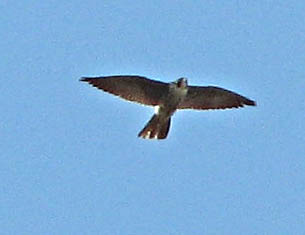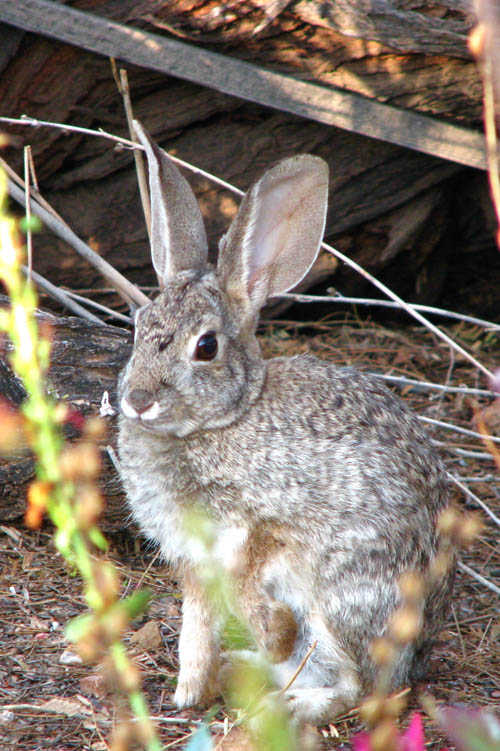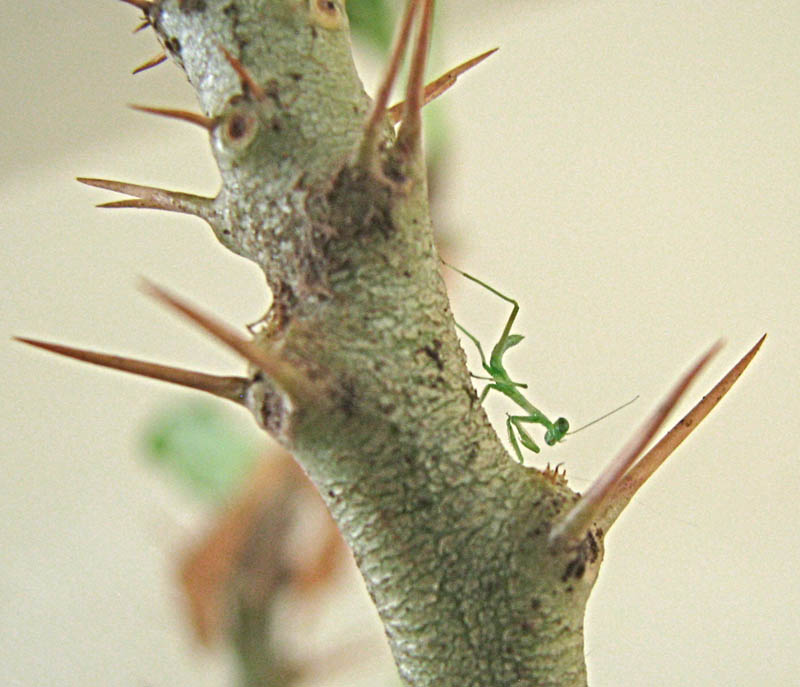Aerial talon-show over Papago Park
Had a nice morning walk in Papago Park (Phoenix AZ) this morning — the spring air was breezy and clear, and the high skies brought out a number of aerial show-offs. The main  attraction was a Peregrine falcon, spiraling and soaring between the two largest buttes in the Park and the Army National Guard reservation, over McDowell Road.
attraction was a Peregrine falcon, spiraling and soaring between the two largest buttes in the Park and the Army National Guard reservation, over McDowell Road.
<< Peregrine falcon soaring; note typical peregrine dark “hood” and pointed falcon wings (Photo E.Shock)
The falcon’s showy overflights attracted the peevish attention of the local pair of Red tailed hawks, who flew up to try to show it the door. In terms of aerial agility, the big, broad-winged red tails are no match for a nimble sickle-winged falcon, but we did witness some serious stooping on  the part of both species, and even one brief roll-over with talon-grappling incident.
the part of both species, and even one brief roll-over with talon-grappling incident.
<< Redtailed hawk, in a power glide. Note black patagium — leading wing edge close to head — one of the best field marks for IDing red-tails aloft (Photo E.Shock)
This action went on among sparse clouds of White-throated swifts — was the probably migrating Peregrine trying to nab a quick swift-to-go before heading north, the raptor equivalent of a drive-thru fast food breakfast burrito?
No wonder the Redtails were upset — a little searching with binox of the inaccessible red rocks on the Military’s property turned up the hawks’ nest, a substantial stick-pile wedged in a ledge on the butte. We’ve suspected they were a nesting pair, but now we know for sure.
A loggerhead shrike was on duty, as well. Spring has been cool, and there are still very few insects around, which  suggests that the Lesser goldfinch and lingering white-crowned sparrows in the desert park might wish to keep sharp.
suggests that the Lesser goldfinch and lingering white-crowned sparrows in the desert park might wish to keep sharp.
<< The last thing the grasshopper saw. Loggerhead shrikes are sometimes called “functional raptors” because although they’re Passerines (perching birds) they prey on insects and small mammals, qualifying them as birds of prey. Dig the tiny white “eyebrows”. (Photo E.Shock)
 The photo of the p-falcon’s a bit grainy due to having to magnify it, but please click on the Red-tail and the Shrike images to enlarge them so you can admire the good feathery detail.
The photo of the p-falcon’s a bit grainy due to having to magnify it, but please click on the Red-tail and the Shrike images to enlarge them so you can admire the good feathery detail.
<< Oh, and here’s King Kong… Their nest is near here, and the Red-tails love to perch on his brow and warm themselves on a sunny morning.


























